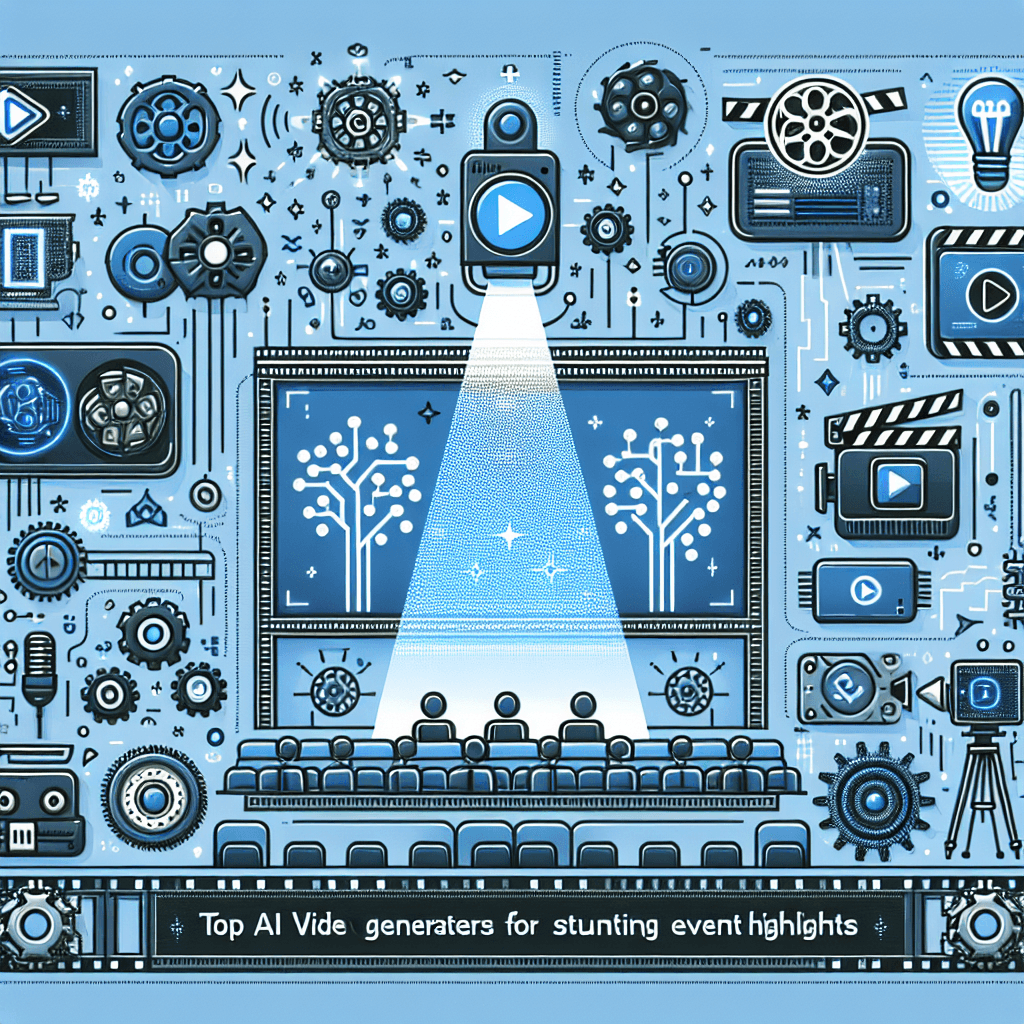In today’s fast-paced digital landscape, architectural visualization has made significant strides, thanks in large part to the emergence of AI image tools. These cutting-edge technologies are transforming how architects and designers present their visions, allowing for breathtaking renderings that captivate clients and stakeholders alike. In this article, we will explore some of the top AI-powered tools available for creating stunning architectural imagery, showcasing their capabilities, unique features, and the benefits they bring to the industry.
The Revolution of Architectural Visualization
The demand for high-quality architectural renderings has never been higher. As clients increasingly expect realistic and immersive visualizations, architects are turning to AI image tools that provide faster, more efficient results. Traditional methods of rendering, which often required hours or days of tedious work, can now be completed in a fraction of the time, all while maintaining exceptional quality.
Why AI is a Game-Changer for Architects
Artificial intelligence is revolutionizing various fields, and architecture is no exception. By leveraging complex algorithms and deep learning, AI can enhance image quality, optimize designs, and even predict potential issues in visual presentations. This technology empowers architects to focus more on creative processes rather than getting bogged down by time-consuming tasks.
Blender: Open-Source Powerhouse
One of the most popular AI image tools on the market is Blender. This open-source 3D creation suite is renowned for its versatility and extensive features, including advanced rendering engines like Cycles and Eevee. With Blender, architects can create stunning visualizations, simulations, and animations that bring their designs to life.
Key Features of Blender
- Fully Customizable Interfaces: Tailor the workspace to your liking for a seamless workflow.
- Vast Community Support: With countless tutorials and forums, help is always available.
- Real-time Rendering: Quick feedback allows for creative iterations without lengthy wait times.
The popularity of Blender stems not only from its functionalities but also from its active community, which continually contributes to its development.
Lumion: Speedy Architectural Visualization
For architects seeking a quick, intuitive solution, Lumion deserves a spot on the list. This tool allows users to turn 3D models into beautiful renderings in real time. Its user-friendly interface enables individuals to seamlessly add elements such as nature, people, and weather effects to their projects.
Why Choose Lumion?
- Fast Processing Times: Render beautiful scenes in mere minutes.
- Realistic Effects: Add dynamic elements like moving water and animated people to enhance visual storytelling.
- Extensive Libraries: Access to a vast collection of pre-modeled 3D objects and materials further simplifies the design process.
With Lumion, architects can present their visions more effectively and engage clients with stunning visuals, bridging the gap between ideas and reality.
Daz 3D: The Power of Realism
For professionals looking to incorporate highly realistic people and environments into their renderings, Daz 3D excels in this area. This software utilizes AI to produce hyper-realistic human figures and environments that can be easily integrated into architectural designs.
Benefits of Daz 3D
- Realistic Character Models: Generate diverse and highly detailed human figures.
- Customizable Poses and Expressions: Tailor characters to fit the context of your project.
- Seamless Integration: Easy to incorporate 3D assets into different architectural applications.
Daz 3D is an excellent resource for creating more relatable architectural presentations, helping clients envision how a space will function with people in it.
Archicad and its AI Innovations
Archicad, a well-known BIM (Building Information Modeling) software, incorporates several AI functions that enhance its rendering capabilities. This tool is particularly popular among architects for its collaborative features, allowing teams to work together more efficiently.
Why Archicad Stands Out
- Smart Design Tools: AI-driven suggestions help optimize building layouts.
- Visual Communication: Share designs in 3D format to ensure all stakeholders are on the same page.
- Integrated Workflow: Link with other design software for a streamlined process.
By incorporating AI, Archicad evolves into a pivotal tool not only for design but for fostering collaboration among project teams.
Photoshop: Enhancing Renderings with AI
While primarily recognized as a photo editing software, Adobe Photoshop has developed AI features that significantly enhance architectural renderings. The Adobe Sensei technology leverages machine learning to automate tasks such as object selection and background removal, making it easier for users to refine their work.
Key Features of Adobe Photoshop for Architects
- Smart Selection: Quickly selects intricate details that traditionally required tedious manual work.
- Neural Filters: Apply artistic effects to create unique visual styles.
- AI-Powered Enhancements: Automatically improves image quality, color correction, and more.
Photoshop remains an indispensable tool in the architectural visualization arsenal, enabling professionals to provide polished, high-quality outputs.
SketchUp: A Classic with AI Capabilities
SketchUp, known for its simplicity and ease of use, has integrated new AI features that enhance its rendering capabilities. By combining a user-friendly 3D modeling interface with advanced rendering tools, SketchUp attracts architects at every skill level.
What Makes SketchUp a Must-Have?
- User-Friendly Interface: Intuitive design enables instant productivity.
- Submit Visualizations: Send models to rendering plugins seamlessly.
- Dynamic Components: Use smart components that adjust automatically to changes.
With the integration of AI, SketchUp becomes even more powerful, delivering stunning visualizations quickly and efficiently.
Midjourney: AI Art Generation for Architecture
Midjourney is an innovative AI tool that generates artistic images based on textual prompts. This is particularly beneficial for architects looking to conceptualize ideas effectively before moving into the detailed design phase.
The Advantages of Midjourney
- Conceptual Visualization: Generate unique and artistic interpretations of your project based on inputted descriptions.
- Quick Ideation: Allows architects to explore multiple avenues quickly.
- Limitless Creativity: Offers unique styles that can inspire and direct design.
Midjourney supports the initial brainstorming phase, helping architects visualize concepts that may guide further development.
The Future of AI in Architectural Rendering
As technology rapidly evolves, the integration of artificial intelligence into architectural rendering is likely to deepen. AI advancements promise to automate more of the rendering process and offer increasingly sophisticated suggestions and enhancements. The future holds exciting possibilities, from predictive rendering capabilities to AI algorithms that can auto-generate design options based on project requirements.
Bridging the Gap Between Vision and Reality
The remarkable potential of AI image tools lies in their ability to bridge the gap between an architect’s vision and the final rendering. By enhancing our capabilities, these tools allow creators to communicate their ideas more effectively, making it easier for clients to envision the possibilities.
Collaboration and Communication
Utilizing AI-powered visualization tools fosters collaboration, encouraging architects, clients, and stakeholders to engage in meaningful discussions. These visual aids help clarify expectations and ensure that everyone is aligned with the project vision, minimizing misunderstandings throughout the development process.
The Importance of Training and Adaptation
As architects embrace AI image tools, it’s vital to invest in training and adapting workflows that incorporate these technologies. Familiarity with these platforms will allow professionals to maximize their potential to create stunning visuals that effectively showcase their designs.
An Investment in Innovation
Implementing AI tools can be viewed as an investment in innovation. By integrating advanced technologies, architects can position themselves as leaders in the industry, attracting new clients while streamlining workflows and enhancing project outcomes.
Conclusion: Embracing the Future of Architectural Visualization
In summary, the rise of AI image tools is revolutionizing architectural renderings. Tools like Blender, Lumion, Daz 3D, Archicad, Adobe Photoshop, SketchUp, and Midjourney are empowering architects to create stunning visuals faster and more efficiently than ever. By embracing these technologies, architects can not only enhance their design capabilities but also bridge the gap between vision and execution, paving the way for more innovative and engaging architectural experiences. The future of architectural visualization is unfolding now—it’s time for professionals to seize the opportunity and lead the way into this exciting new era.








